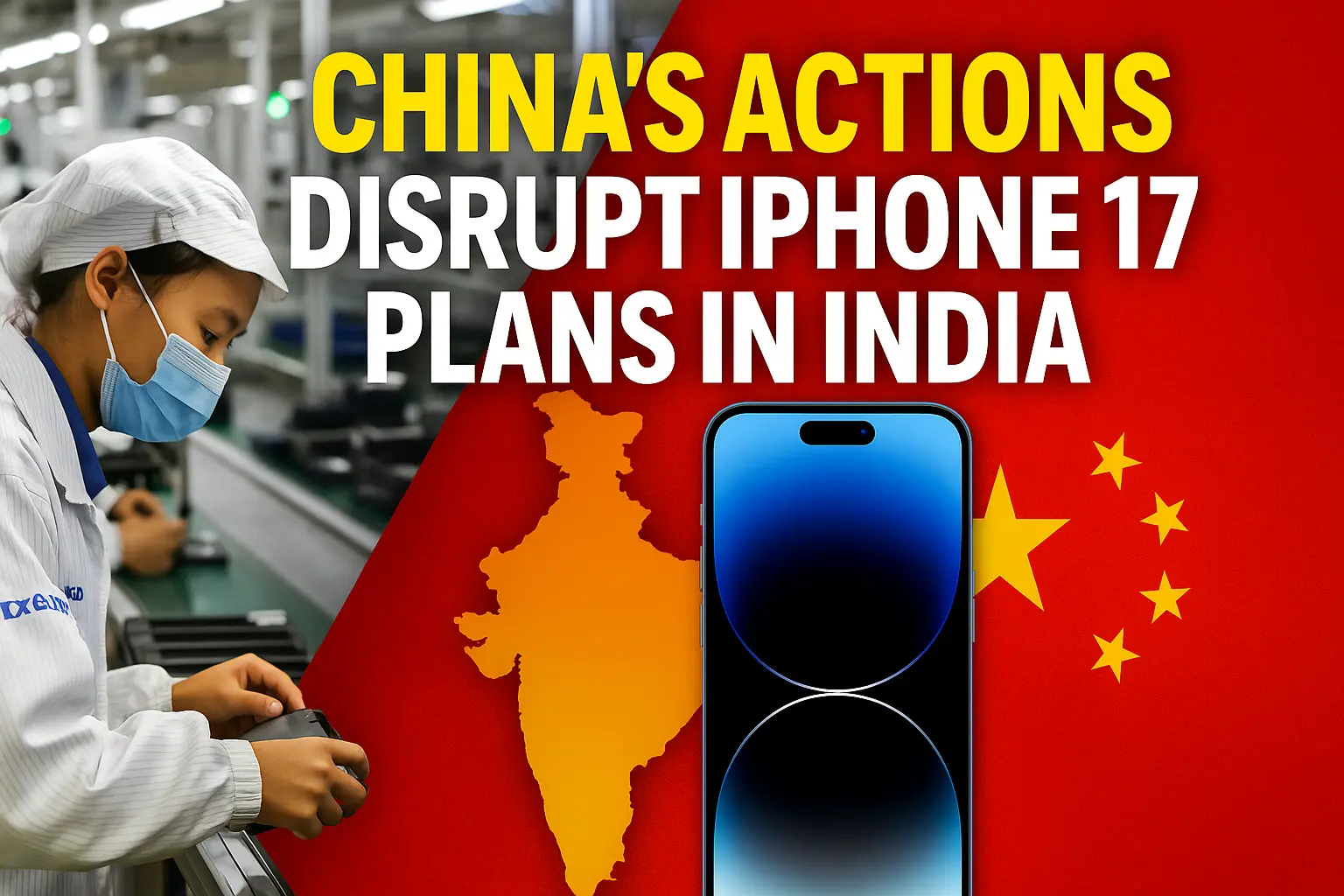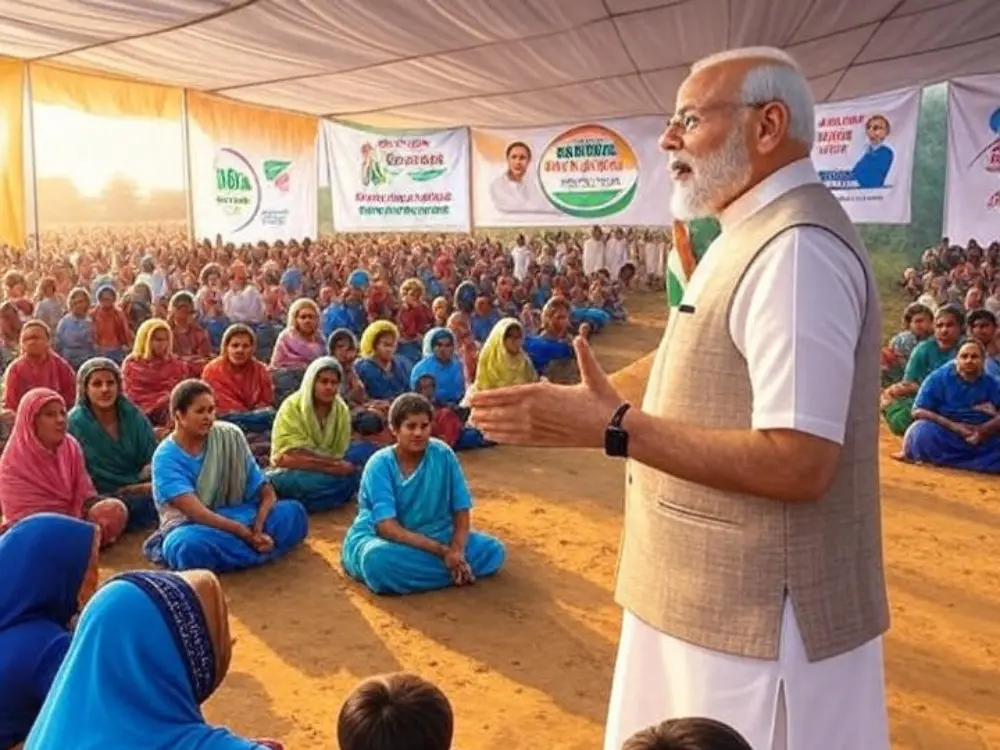China recalls 300+ Foxconn engineers from India—potential disruption to iPhone 17 rollout & “Make in India” momentum. Explore inside angles & analysis.
India’s dream of becoming a global iPhone manufacturing hub is facing a new and unexpected threat—this time not from market forces or labor, but from geopolitical strategy. In a surprise move, over 300 Chinese engineers working with Foxconn in India have been recalled back to China, raising questions over Apple’s production timeline and India’s readiness to lead global tech manufacturing.
At the same time, China has delayed or restricted shipments of advanced machinery and critical rare-earth magnets—essential components for high-end electronics production, including Apple iPhones. These developments could delay the iPhone 17 assembly lines and pose a serious test for India’s growing electronic supply chain ecosystem.
Table of Contents
ToggleWhat’s Really Happening at Foxconn India?
Foxconn, one of Apple’s largest contract manufacturers, operates extensive facilities in Tamil Nadu and Karnataka, which are integral to Apple’s iPhone assembly plans in India. The production ramp-up for the iPhone 17 was well underway, with preparations in place to localize more stages of manufacturing. These efforts heavily relied on the expertise of hundreds of Chinese engineers who were responsible for setting up high-precision assembly lines, managing complex processes, and training Indian staff. Suddenly, all of these engineers were ordered to return to China. The absence of this critical workforce has led to substantial setbacks in assembly line optimization, delayed trial production, and has created gaps in quality assurance. Internal sources reveal that operations have slowed dramatically, and teams are struggling to maintain the pace and standards expected by Apple.
Why Did China Pull the Engineers?
The decision to recall Chinese engineers and slow down the export of high-end manufacturing equipment appears to be part of a deliberate geopolitical strategy by China. Over the past several months, China has taken multiple steps to restrict the movement of technical talent and advanced technology out of the country. Analysts believe this is a reaction to global tech companies, especially Apple, attempting to diversify their supply chains and reduce reliance on Chinese manufacturing. By pulling back its engineers and halting exports, China is signaling that it still holds significant leverage in the global electronics ecosystem. It also serves as a warning to both Apple and India that replacing China’s infrastructure, workforce, and resources is not going to be a seamless process. This tactical move can be seen as a silent form of economic warfare meant to protect China’s long-standing dominance in high-tech manufacturing.
Impact on Apple and the iPhone 17 Rollout ?
Apple’s ambitious plans for India were centered around increasing the volume and quality of locally assembled iPhones, particularly the iPhone 17, which was expected to be the first model significantly manufactured outside of China. The recall of key technical staff and export bottlenecks for machinery have thrown these plans into uncertainty. With a reduced number of experienced engineers on the ground, Apple faces delays in setting up production lines, difficulty in achieving desired product quality, and the possibility of missing global shipping deadlines. This disruption could force Apple to revert to Chinese facilities for a larger portion of iPhone 17 production, undermining their efforts to diversify. Moreover, the situation may lead to increased production costs and added logistical complications if the balance between Indian and Chinese manufacturing is disturbed.
India’s Fragile But Growing Manufacturing Ecosystem:
| Area | Current Status |
|---|---|
| High-precision machinery | Still mostly imported from China |
| Skilled tech labor | Improving, but needs time |
| Component manufacturing | Growing but limited |
| Rare-earth sourcing | Heavily dependent on China |
India has made commendable progress in electronics manufacturing over the past five years. Major international players, including Apple suppliers like Pegatron and Tata Electronics (which acquired Wistron’s India operations), have established manufacturing plants across the country. Government policies such as the Production Linked Incentive (PLI) scheme have provided financial incentives for domestic production, leading to an increase in smartphone assembly and exports. Despite these advances, the current disruption has highlighted the ecosystem’s fragility. India still depends heavily on imports for precision machinery, high-tech components, and specialist knowledge. The sudden exit of Chinese experts has revealed gaps in local engineering expertise and a lack of readiness in managing highly technical production lines independently. This emphasizes the urgent need for India to build a more resilient and self-sufficient manufacturing base.
The Hidden Battle Over Magnets:
A less visible but critical front in this disruption is China’s restriction on the export of rare-earth magnets, particularly neodymium magnets. These are indispensable in the production of smartphones, electric vehicles, medical devices, and renewable energy technologies. By limiting these exports, China is applying pressure not only on Apple but also on India’s broader technological aspirations. However, India is not standing still. Organizations like the Defence Research and Development Organisation (DRDO) and private sector firms are beginning to explore domestic production of rare-earth magnets. Early-stage initiatives in states like Odisha and Andhra Pradesh are exploring extraction and refinement of rare-earth materials. While still in the development phase, these efforts could eventually lead to a reduced dependence on Chinese imports, creating a more secure supply chain for critical components in the years to come.
What This Means for the Future:
The current situation may be a short-term disruption, but its implications are long-term and strategic. For Apple, it highlights the risks associated with over-reliance on any one country—even for diversification efforts. The company may now need to broaden its outsourcing strategy, involving countries like Vietnam, Thailand, and Mexico more aggressively. For India, this episode is a critical turning point. It underscores the necessity of accelerating investments in talent development, high-tech machinery manufacturing, and raw material processing. If India can address these challenges effectively, it could transform this disruption into an opportunity and move closer to becoming a true alternative to China in the global supply chain. The race is on—and the stakes are enormous.













